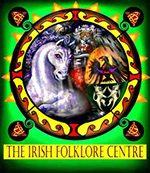How and why one saga became three with All roads leading to Kerry. A great read by Tighe O’Donoghue/Ross, first published in The Kerry Magazine 2015
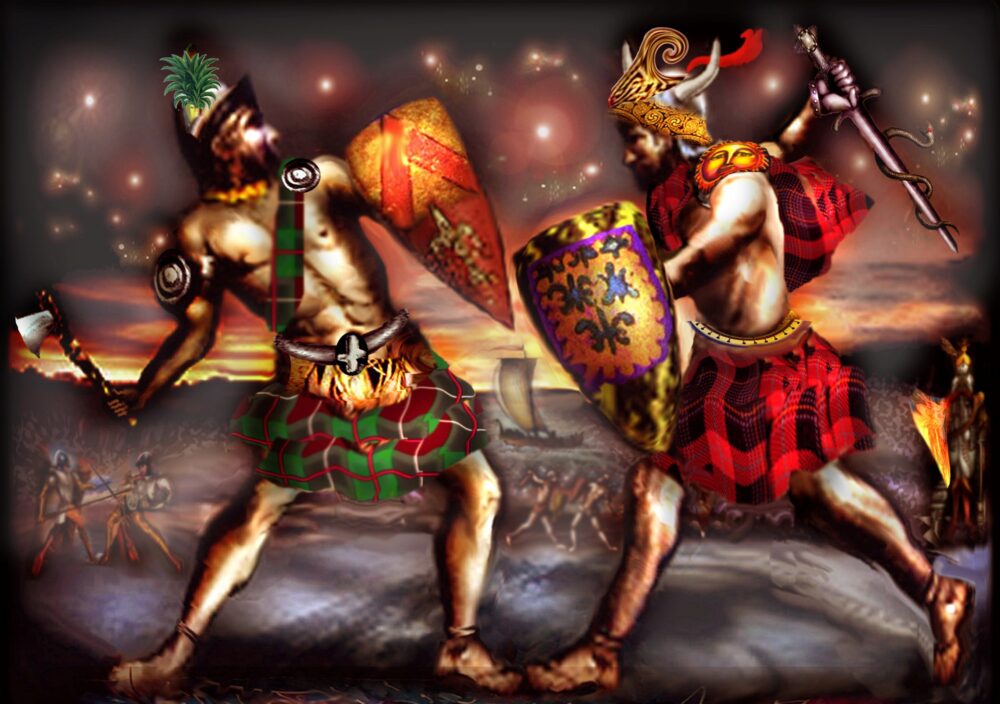
THE COMING OF THE GAEL
HOW AND WHY ONE SAGA OF INVASION BECAME THREE
All Roads Lead to Kerry
Tighe O’Donoghue/Ross
First published in The Kerry Magazine 2015
And The O’Donoghue Society Journal in 2016
Introduction
In ancient mythology and legend, the Kingdom of Kerry is the home of the Goddess D’Anu, Mother of the gods and the Queen of the Land. The Paps of D’Anu overlook the landscape in its southwest corner, forming the focal point of Munster’s primordial creation.
As the train neared Millstreet, I went to the window and looked west towards home. In the distance, I could see the twin mountains, the Olympus of Ireland, and as the train sped on, the glorious breasts of the goddess Dana sank gradually out of view.
Eamon Kelly 1
The Kingdom of Kerry stands as a place of origin and beginnings – where all three of Ireland’s Gaelic invasion myths commence. These three major invasion stories are that of the Milesian Invasion, the story of Eoghan Mór (Mogh Nuadat) and the tale of Donn Daire King of the Eastern World.
This article postulates that they are each merely different versions of the same momentous event and that these different renditions are propagandistic versions created by different interest groups, yet describing one single episode which began the amalgamation of all of the disparate tribes of ancient Erin and the emergence of the classic Gaelic culture.
To begin, here is a brief synopsis of each myth:
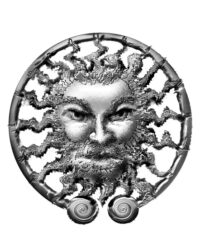
The Milesian Invasion
The immemorially old foundation myth meant to grant a common heritage to all
The name of Milesian was once one of almost divine significance. It was the Milesians who were said to have introduced and consolidated the Gaelic culture and stamped all the people of this island with their identity.
This story of the Milesian Invasion forms the closing chapter to the ancient Book of Invasions (Leabhar Gabala hÉireann) an 11th century compilation which identifies this event as the final invasion where the Milesians land in Kenmare Bay and bring the Gaelic culture to Ireland. The sons of Mil, or Miles Espania (the Spanish soldier) were supposed to have invaded Ireland at the start of the Bronze Age in the Britannic Isles (northern Europe) around 2500 BCE.
During the century of the Celtic Revival (1830-1930) the tales of the Milesians were resurrected and celebrated and gave a noble genesis for the subjugated Irish people. The genesis myth was taken very seriously back then, not mere fairy tale and legend; and Irish scholars and antiquaries of that time all rallied to the infallibility of its truths. Since then a modern revisionism has set in and many experts now doubt that the Milesians ever even existed at all.
Most scholars believe that if there were any such incoming warrior bands they were very few in numbers. They also would have been far too early to be what we would consider Gaels or even Celts. The Bronze Age in Northern Europe was the time of the proto-Celts called the Beaker People.2
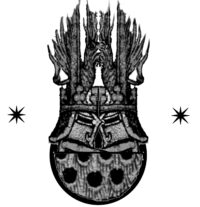
Mogh Nuadat/Eoghan Mór
The version of the elitist warrior bands, the Eóganachta
Around the time of the Christian era, Mogh Nuadat (aka Eoghan Mór) a descendent of the Milesians, vies with Conn of the Connachta (aka Conn of the Hundred Fights) for High Kingship of All Ireland. The 13th century tract The Battle of Mag Lena (Cath Maigh Léna) tells us how he is defeated in a battle with the Connachta forces and flees from Kerry to Spain where he gathers an army and returns for his final confrontation with Conn.
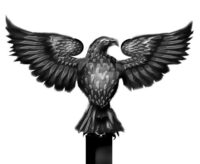
Donn Daire, King of the Eastern World
The version told by the Sen Erin vassal tribes
Finally, we have the legend of Donn Daire, with his rival Finn as the hero, the earliest recorded of the three in the 10th century manuscript in The Battle of the White Strand (Cath Fionntrágha). In it Donn Daire sails from the East, stops off in Spain where he gathers more Celtic warriors and invades Kerry at the White Strand near Dingle, where he battles Finn Mac Cumhal and the Fianna, the indigenous native defenders of the island.
The Lore/Lure of Kerry
Ireland is especially well known for its imaginative storytelling. It might be thought quite remarkable; however, that one small part of Ireland – Kerry – is particularly rich in its many myths and legends. It is unfortunate that school children learn very little of the wealth of story found in Kerry. We have a plethora of local legends, from the oft mentioned Wizard Prince of Loch Lein, to the Hag of Beara and tale of Mad Sweeney in Gleann na Galt. There are many another such sagas set and emanating from Kerry, such as the Wonder Voyages of St Brendan (Imrama), as well as many of the stories of Finn Mac Cumhal and the Fianna and of much of the tale of Diarmuid and Grainne (Diarmuid is said to have been of the O Dubna and the Ui Donnchadha).3
In seeking some explanation for this wealth of material, and why Kerry is such a magnet for all of this activity, we might consider that its genesis may have to do with the existence of the ancient copper mines on Ross Island in Lough Lein – the oldest in Northern Europe.4
From a very early date it was a famous place, and trade with the ancient world insured early contact with the classical trading nations of the Mediterranean such as the ancient Greeks and Phoenicians. When we consider that Carthage was the thriving colony of Phoenicia and that the sound of Phoenicia and Fomorian (one of the earlier invaders in the Book of Invasions) are similar and that both were famous African sea raiders, we may begin to see a connection between myth and fact. When this is compounded by realising that the Fomorian god Balor sounds very much like the Phoenician god Ba’al and that the ancient Irish worshipped a pagan fire god called Bel (Beltaine) we can feel more assured that there was not only contact, but significant mutual influence as well.
Due to the copper mines at Ross, Kerry must have been famous as an outpost of the ‘Tin Isles’ to the Greeks and Phoenicians. With this sort of trade there must have been more sophistication in ancient Kerry than was present in the more isolated quarters of Ireland.
The Ancient Celts
The Bronze Age in Ireland is well documented with artefacts, especially of gold 5 and they reveal a wealthy aristocracy with an active ceremonial and religious impulse.
The people of this period (from Newgrange 5000 years ago, to the Iron Age of 300 BCE) are only hazily understood. Celtic tribes and Celtic culture from the continent may have been infiltrating in small groups since the Hallstatt period (800BCE), but with the rise of Rome and the fall of Gaul that influx would have increased.
The evidence of growing confrontation of that time is all around us today. Stone forts like Staigue and Dun Aengus attest to an increase in defence and conflict as the Celtic world of old Europe was being dismantled by Roman might and administration. It was not all one way, and the Celts may have influenced the Romans as well as the Greeks and Etruscans almost as much as they were influenced by them.
Certainly classical records attest to the fact that Celtic mercenaries were active all around the Mediterranean and further a field. Celtic armies fought for Greek City States in Asia Minor, Egyptian Pharaohs and Hannibal and Alexander. They were renowned for bravery and courage in battle, but the fight was turning against them as Rome was emerging as the new world power.
Celts from Spain, France and Germany came to Ireland and amongst these came the Eastern Celts from ancient Thrace who had thrust furthest into the classical world of Persia, Greece, Egypt and Scythia. Artefacts indicating this Eastern influence are evident in the South, particularly at the Eóganacht Raithlind stronghold of Garranes in west Cork that flourished in the 5th-6th centuries. Excavating there in the late 1930’s, Sean O Riordan discovered remains of amphorae manufactured in Byzantium and red-ware pottery produced exclusively in Asia Minor. The main ring fort was found to be a major manufacturing site, producing highly skilled bronze castings and delicate millefiori glass mosaics of extraordinary complexity in a diminutive size difficult to imagine. The designs in the glass suggested a Persian influence.
Despite O Riordain’s stellar work at the site, it only scratched the surface. Another more comprehensive dig, expanded to include other ring forts in the complex might uncover even more tantalizing clues about the significance of this royal stronghold. It is unquestionable that there was a high degree of familiarity and trade with the eastern reaches of the Mediterranean and Gaels from the east. With such sophisticated contact, they were far more refined and advanced in comparison with other stay at home Celts from Northern Europe.
The division of ancient Ireland North and South is of the earliest genesis. The Ulster versus Connacht rivalry recounted in the story of the Tain, venerable as it is, does not even begin to approach the age of the archaic division line of the Esker Riada (the terminal moraine of the last ice age) which runs from Galway to Dublin.
Below this line, the Southern Half shows a basic difference of technology in the ancient methods of grinding grain reaching back to the Neolithic Age. North of this line we have the bee hive quern, while to the south of it all the artefacts recovered shows that the older saddle quern technique was employed. In addition, and curiously, there are no artefacts of the La Téne culture found in the South, nor is there in Spain 6
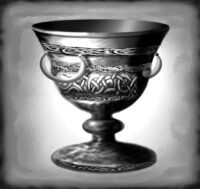
A Grain of Truth
The Milesian myth in the Leabhar Gabala says that the Gaels came from the East on the borders of Scythia and arrived in Ireland by way of Spain – but a date as early as 1500 BCE is difficult to believe. It is far more likely that the invasion of Donn Daire, that the annals say took place in the 3rd century AD, is the timing of the true arrival of the Eastern Gaels; but even that timeline is prior to any contemporary written history, hence subject to conjecture. It was not until the late 6th century before we have reliable annalistic records of historical legitimacy, and many of those early manuscripts have been lost, only referred to in later texts.
Ultimately the question of whether or not there really was a Donn Daire or any of the other legendary invaders is quite valid. Were there Milesians at all or are our cherished fantasies about heroic champions and High kingships all entirely speculative? Saying that they are mere myths is dangerously dismissive, for it was myth that led Schliemann to discover Troy; and that famous case should be a reminder that legend is sometimes if not often based on fact.
Nevertheless we should be mindful that we humans love to tell stories and invent our own versions. Though pure invention is probably rare, a bit of embellishment is not. Most of us tend to exaggerate to one degree or another, and that seems to be what our early Irish pseudo historians did – to a great degree. But then again so too did Julius Caesar and Tacitus, Ramses the Great and the Venerable Bede, not to mention the father of History, Herodotus (also known as the Father of Lies) and many another famous writer of history. It would seem that we all are susceptible to creating our own expanded versions of events.
Prof. O’Rahilly contends that the ruling dynasty which brought the Gaelic culture to Ireland was from the Q-Celtic7 speaking Gallic tribe called the Caireda (in Latin – Quariates) from the Garone region of France 8. That is plausible, for this tribe had returned to the west from their mercenary exploits in Thrace and Persia, Egypt and Spain. Concrete proof of this is that some of the loot from the sack of Delphi has been found buried in nearby Toulouse.
As far as a large scale conquest or an influx of newcomers goes, in truth there is little physical evidence for it, and the word ‘invasion’ itself would seem to be misapplied. Who the Gaelic Milesians were is debatable, but one thing is clear – that they must have been a small minority. They could not have subjugated the many Celtic, pre Celtic and proto pre Celtic tribal groups already living here, for they were far too few in number; but they could have slowly developed an assimilating culture which spread by osmosis, fuelled by their superior technologies and sophisticated customs which enticed the indigenous Irish tribes to join them. But more importantly the winning tactic would seem to have been that they included many of these indigenous earlier tribes into their creation myths, providing them with a synthetic Gaelic pedigree as well.
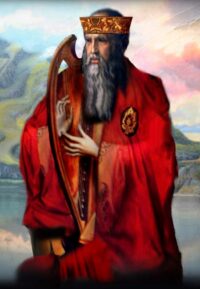
The Bardic Oral Tradition
The druidic bards were responsible for safekeeping the histories and genealogies of the peoples within their territories. They did this through memory and oral recitation of this information. Their importance was such that their position in the clan structure was the highest of all, bar the chief himself. They shared the prime position at the table of the chief and from there recited the glories of the chief, the clan and their progenitors. Their memories were immense (it took up to 20 years study for a bard to attain this knowledge and position) and their tales included the mythic beginnings of their peoples.
When Christianity arrived, it brought with it the written word, and as this new faith overshadowed the pagan philosophy of the druids, at least some of these learned men almost surely were absorbed into the Christian hierarchy. When the early monks began recording the history of the Irish, who else was the source of this information than the druidic bards? It’s entirely possible that it was they who began to record these origin tales.
These origin myths were recorded by different, perhaps numerous, scribes – and they would have contained the particular idiosyncrasies of each of those authors. Understandably, the version of the same events may be recorded quite differently depending upon the patronage under which the annalistic records were being recorded. To accept that each Irish tribal (Tuatha) group had its objective to elevate their own ethnicity makes it easier to see why we have this triumvirate of stories.
In fact, the oral tradition practised by the druids nearly ensured that no matter how fastidious they were different versions would evolve. Contrary to the assumption that the information they preserved was consistent and came down to us word for word due to the druids’ fantastic memory, it is more reasonable to accept that variation, perhaps widely so, was the norm.
It is clear that much about this history is conflated, but it does not mean that it is entirely false even though the pseudo-historians of Ireland were so generously profligate in producing different versions of it. The new religion of Christianity was transforming an ancient society, and it is understandable how the example of the Old Testament of the Bible with its archaic history tales of Abraham, David and Solomon became the model for an Irish equivalent.
In order to better appreciate the parallels within the three legends, let’s describe more fully the details of each myth. There are various redactions and differing complexities to be found, but the following is a streamlined version focusing on the main salient elements.
The Three Myths
The Milesians
The seminal origin myth of the Irish race, the dramatic tale of the Gaelic Milesian Invasion, is recorded in the Book of Invasions – the central tome of Irish ancestry. It describes six prehistoric invasions and ends with the final invasion of the Gaels aka Scots.
It abounds with magical elements but the central theme is that at about the time of the Trojan War a fleet of Pheno-Scythian warriors arrives in Kerry. Their leader Donn, the eldest of the brothers, is met by a delegation of local tribes headed by Queen Erin of the Tuatha de Danann. She accepts that the Milesians are invincible and promises that her people will submit to them peacefully, asking only that Donn will name the new conquered country after her.
Donn haughtily refuses, telling her that he will name it whatever he wishes. Then the deception is planned, for the chivalric code of the Celts dictates that the Milesian fleet should re-embark out past the ninth wave of the sea and land once again, allowing the Tuatha de Danann time to ready themselves for the attack.
Donn takes the ships out and the de Danann druids raise a magic storm in which Donn is drowned. Eventually the other ships do make landfall and the de Dananns are defeated. Donn’s brother Amerghin the arch druid has difficulty understanding the archaic speech of the indigenous Irish but makes a pact with them that the victorious Milesians will share the country with them equally. All the land above the ground will go to the Milesians and all of the land beneath the ground will go to the de Dananns. Thus they poetically become the ‘Little People’, the fairy gods of the Sen Erainn – the old stock who live beneath the fairy mounds.
The land above is divided between the brothers Eber and Eremon, the former ruling the south and the latter ruling the north. Later in a battle between them, Eber of the south was killed by Eremon of the north.
Eoghan Mór
The story of Mogh Nuadat (Eoghan Mór I) follows a millennium and a half later with a distant descendent of those Milesian ancestors. Eoghan chose this throne name as devotee and servant of Nuada – the god of the Hunt and major deity of the neighbouring Leinster tribes, who he wishes to enlist as allies in his battle against the Northerner, Conn of the Hundred Fights. Defeated by these northerners at Carn Buidhe near Kenmare, the mythical lady Éadaoin aided Eoghan’s retreat by making rocks appear to be soldiers, confusing Conn’s forces. Eoghan then sails from Kenmare Bay to Spain in order to enlist more warriors for his army. He marries the princess Beara, daughter of Heber Mór, the king of Spain, and eventually returns with his Spanish army to Carn Buidhe, along with Beara’s brother, Prince Froich, who battles along side him in the ensuing struggles. When Eoghan returns to Kerry, he brings provisions that save the local tribes during a famine, which gains him their support as their new king.
Eoghan is eventually killed in battle with the northerners, but the circumstances of the death were unjust by the standards of Celtic honour; hence Conn was not allowed to claim Mogh Nuadat’s territory, and the north/south division remained.
Eoghan’s grandson Eoghan Mór II was killed in the battle of Magh Muchruime, but the daughter of the Arch Druid Mogh Roth had lain with Eoghan the previous day. When it was time for her child’s birth, she is told by her father that if she can forestall the birth of Eoghan’s son for one more day, this propitious birth date would mean that his lineage will rule over Munster for the five hundred years. She achieves this by sitting on a flat rock in a stream until the dawn of the next day, thus flattening the skull of her newborn son, Fiachra Muilleathan (Flathead), who becomes ancestor of the Royal lineage of the Desmonian princes and the founder of the Eóganachta Dynasty, who ruled the South independently for the next five centuries.
Donn Daire
The name Donn Daire has a number of mythical permutations. As O hOgain puts it, ‘the character Donn is perennially associated with the shadowy realm of the dead.’ 9
Daghdha is a deity of the Tuatha Dé Danaan – a ‘good god’ whose cauldron was never empty. Daire is another variation of that sobriquet. The name word Daire/Dagda also has, in the opinion of some experts, an affinity with the great Persian King Darius, a god/king and one of the mightiest king of kings in all of antiquity. Thus the name Donn Daire might reflect the sojourn of the Eastern Celts who invaded classical Greece through the Pass of Thermopylae, sacked the sacred shrine at Delphi and moved across into Asia Minor to later become the Galatians of St Paul’s famous epistle.
This tribe accompanied Alexander the Great on his conquest of Asia and the defeat of the Persian Empire. Their military exploits next brought them to Egypt where they served in Pharaoh’s army and were bivouacked in the Nile Delta region.
Donn Daire is hence a mysterious figure with eastern connections who according to legend sailed from the East, stopping in Spain where he gathered more Celtic warriors in an army with which to invade Kerry.
In the Battle of Ventry, it is said that Finn Mc Cool and the Fianna defended the land against Donn Daire, King of the (Eastern) World. The battle lasted a year and a day before Finn and his Fianna were victorious and Donn Daire is killed.
However, Donn Daire had a son, Eochy, who also appears in other legends. In them, this Eochy, whose name means horseman, becomes a god himself – Eochy Mac Maireadha (Midir/Donn – the god of the dead) who is the ancestor of the Ui Eachach Mumhan, of the Eóganacht Raithlind.
The Scythian Celts were said to have been excellent horsemen, with finely bred steeds from the Pontic Steppes. These larger horses would have dwarfed the native Kerry hobbies – and is it any wonder that Eochy Mac Maireadha became Eochy the Horse God? Fittingly, the name Ui Eachach means ‘Abounding in Horses’. In one version of the story, Eochy’s great and magical horse is given him by the Tuatha de Danann god Aonghus, the god of Love, of Newgrange in order to escape his wrathful spirit father Midir god of the Underworld for he has stolen his father’s wife. (This tale has echoes of the Diarmuid and Grainne legend, also part of the Fianna cycle. Not to mention the story of Oedipus.)
The huge mount takes them far to the North where the horse relieves himself and creates the vast waters of Lough Neagh (Loch nEach) and there is founded the other Ui Eachach – the Ui Eachach Cobo, elements of which are, some suppose, to have crossed over to Scotland and begun the dynasty of the Mormaers of Lennox.
Connections
These three legends have many elements in common, supporting the contention that they are interrelated. There are the following specific features:
• Each legend has a landing on the coast of Kerry.
• Each legend includes Spanish mercenaries.
• Each legend has a leader who is sacrificed and killed.
• Each legend has a son/s or grandson who establishes the dynasty of the Gaels
If we examine the names we have some hint of the connections. Mil, or ‘Miles Espania, means Spanish soldier in Latin, and identifies the man and where he came from. Needless to say, Latin was not around 1,500 years before the Christian era. It is an exaggeration pure and simple to put him at this early date, simply to enhance his prestige as founding father of all of Ireland’s princely lines. The surviving sons of Mil, Eber and Eireamhon, leaders of the South and North respectively may also be as much fictitious inventions as are the early dates.
A plausibly more accurate Scythio-Spanish invader is Donn Daire, whose epithet King of the World, or more precisely ‘Eastern’ World, identifies his Scythian roots as well as Mil’s. Another shared resonance is the fact that Donn was also the name of the Milesian leader and the eldest son of Miles Espania, who was born in Scythia and drowned in the magic storm raised by the Tuatha de Danaan druids before he could land his forces ashore.
The numerous similarities in the careers and ambitions, the histories and genealogies of all three of these legendary individuals might lead us to believe, in my humble opinion`, that they may indeed be but describing one man and one momentous event. The fact that the first invasion occurs over 1500 years before the other two may simply be, as some suggest, an effort of the pseudo-historians to supply the Irish with a truly ancient genesis similar to the Biblical stories of the Old Testament Israelites.
The apparent similarities of three separate stories; that of the Milesians, the Mogh Nuadat tale and the Donn Daire legend seem to be too similar for them all to be a simple coincidence, for in the end all three involve a battle between cultures with the Gaelic culture eventually winning out over the indigenous inhabitants. Mogh Nuadat of the South loses his battle to Conn of the Hundred Fights of the North, but then so too does Donn Daire who is killed by the defending Fianna of Erin, and even the Milesian Eber of the South is killed in the end by his own brother Eireamhon of the North. Ultimately it does not matter who wins. What does matter is this arrival into prehistoric Ireland by exotic Celts from the East known as the Gaels.
Munster of the Eóganacht
It is said that there are fewer records of Munster history than other provinces of the country,10 yet the Annals of Inisfallen are the oldest written records in Ireland. Written records began quite early in Kerry – of the 369 examples of ogham script found all across the British Isles, 121 are found just in Kerry 11. There is also evidence of Christianity in Kerry which predates all other places in the country, and the province of Munster was consolidated under the Eóganachta hegemony before the rise of the Ui Neill of Ulster.
In short some might say that Munster is superior, in age, culture and development than is any other part of the country; and this is underscored by an observation made by the respected Scottish historian Sir Iain Moncreiffe of that Ilk when he wrote that the Eóganachta of Munster was by far the most sophisticated and cultured royal dynasty in all of Ireland.12
When Brian Boru and his immediate predecessors vied to overthrow the ruling Eóganacht dynasty, they attempted to legitimize their usurping of power by claiming Milesian ancestry from Cass, the supposed brother of Eogan Mór II, the Eóganacht eponymous ancestor – for both were sons of Ollill Olum and therefore descendants of the legendary Milesians. At that time, having this ancestry was vitally important to the ambitions of any dynast wishing to advance their claims.
While the Eóganacht of Raithlind and Cashel may have had their differences at times, they were united in their dislike of the Dal gCais. ‘How closely the Eoganachta Raithlenn (Ui Eachach) felt themselves to be united with Cashel…is shown by their indignation and their violent effort to dislodge the intruders when the Munster throne was usurped by the Dal gCais.’13
Spread of Gaelic Influence
Milesian/Gael/Scot – all three names are interchangeable. In the Medieval period Ireland was called in Latin Scotia Major, while Scotland was known as Scotia Minor. The commanding warrior septs of the Eóganachts were called Scots in the Irish texts and called Gaels (or Goidhels) by the P-Celtic speaking Welsh.
The clans of the Highlands of Scotland are recognised as being Irish in customs and by race and were referred to as such by the English. The kilt and tartan, bagpipes (warpipes) and the clan system itself, all thought of as being Scottish, all originated in Ireland (contrary to those naysayers who enjoy dismissing these items/traits as not part of Irish heritage). The Gallic language as well makes it clear that the Scots of Scotland are derived from the Scots of Ireland in the first instance.
A local Killarney historian told me recently that “…the O’Donoghues were very Scottish…” and by this he meant that the two O’Donoghue septs were akin to the chiefs and clans of the Scottish Highlanders in their customs and manners.
There is evidence that these Milesians/Gaels/Scots spread across the island of Ireland and established royal kindreds from the Ui Eachach Muman in the South to the Ui Eachach Cobo in the North. One hint is that there is a Rathlin Island just off the Northeast coast of Ulster. It may be more than coincidence that this small island has a similar name to the Rathlind Eóganacht.
A final curiosity is that the most remotely northern of Highland clans – the clan Mackay, were recognised as speaking a dialect similar to that spoken by the Gaels of Kerry:
“The Gaelic still spoken in Strathnaver (Mackay country) has many affinities closer to the Munster Gaelic of southern Ireland than to any Scottish dialect…”14
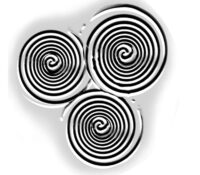
Summation
Comparing the three legends, the myth of Eoghan Mór is clearly tied to that of the Milesians, since he is considered their descendant. It is probably for that reason that T. O’Rahilly proposes that they are two accounts of the same story.
In his book Early Irish History and Myth, O’Rahilly states:
“The Goidelic invasion is known in L.G. [Lebor Gabála] as the invasion of the Sons of Mil. The highly artificial and ‘learned’ character of the L.G. account is obvious at the first glance. Mil’s full name is…Miles Hispaniae, ‘the soldier of Spain’. Scotta, the name of Mil’s wife, is simply the Latin for ‘Irishwoman’. Scotti was assumed to be related to Scythi, and so we are told that the Goidels originally lived in Scythia…15
Mug Nuadat, on the other hand is ignored in L.G. The fact that the Mug Nuadat legend is ultimately only a variant of the story of Eber’s invasion was implicitly recognized by some early redactors”.16
I have not read of any other historian who has connected all three of these myths as being different versions of the same event. In fact, Ó hÓgáin only gives Donn Daire passing mention.
In truth, it’s almost certainly safe to say that none of them are entirely accurate, for historians are inevitably to one degree or another both propagandists and spin doctors, and all history is part myth – even our most modern versions of it. Whatever the case, it becomes more and more clear that much about this early Irish history is conflated, but it does not mean that it is entirely false, even though the pseudo-historians of Ireland were so generously profligate in producing different versions of it. The source of it all may indeed be a case of Eastern (Thracian) Celts arriving in Ireland along with others from Celtic tribes from Gaul and Spain.
Each of these three origin myths share striking similarities, and it seems a logical premise to consider that they each may arise from a single source. The arrival of the eastern Gaelic Scots with Spanish soldiers was a monumental change which amalgamated the different strands of the many tribes of the aboriginal Celts and pre-Celts into a thriving culture with a common language, customs and traditions.
The evidence suggests that the Gaels first infiltrated into the heartland of the country through Kerry. Their descendants, the Eóganacht warrior septs facilitated their conquest by peaceful, all inclusive amalgamation, rather than conflict. And when surrounded by the Anglo-Normans and subsequent Elizabethan and Cromwellian settlers, the remnants of the old Eóganachta made their last stand in the mountainous refuges and wild natural defences of the extreme southwest. Kerry, having been the gateway for the Gaelic culture, eventually became the last outpost of Gaelic self determination, for here existed into Penal Times and the Protestant Ascendancy the Robbers Glen 17 a famous stronghold of Gaelic freedom and fidelity.
Despite many historians doubting the very existence of the Milesians, much less believing that there was a Milesian Invasion – I believe there is sufficient evidence to show that an armed infiltration took place from a group of Q-Celtic Gaels coming from the borders of Scythia who began the slow assimilation of the majority of Irish tribes which they brought under their wing.
Despite the fact that Donn Daire was killed it was not necessarily an ongoing bloody conflict but a case of attraction to a finer more cultivated set of skills and behaviours which enticed the indigenous Irish to amalgamate into the Gaelic Culture of refinement and heroic dimensions.
The Royal Pheno-Scythian Fleet did come to Kerry and all of the tales and stories, varied though they may be, reflect the underlying fact that the Milesian Myth is actually True.
XXXXXXXXXXXXXXXXXXXXXXXXXXXXXXX
Bibliography
Annals of Clonmacnoise
Annals of Inisfallen
Barrington, T.J. Discovering Kerry, Blackwater Dublin, 1976
Cunliffe, Barry, The Celtic World, McGraw-Hill, 1979
Ellis, Peter Berresford, Erin’s Blood Royal, Constable London, 1999
Ó Corráin, Donncha, Ireland Before the Normans, Gill & Macmillan 1972
Ó hÓgáin , Dáithí, Myth, Legend & Romance, Prentice Hall Press, 1981
Raftery, Barry, Pagan Celtic Ireland, Thames & Hudson, 1997
O’Rahilly, T. F. Early Irish History and Mythology, Dublin Institute for Advanced Studies, 1999
Ó Ríordán, Seán P. The Excavation of a Large Earthen Ring-Fort at Garranes, Co Cork, Proceedings of the Royal Irish Academy, Vol XLVII, Section C, Feb 1942, pgs 77-150
O’Sullivan, Ann & Sheehan, John, The Iveragh Peninsula, Cork Univ Press 1996
1 Kelly, Eamon, The Mists of Time – Tighe O’Donoghue, Siamsa Tíre, 1994, pg 20
2 Cunliffe, Barry, The Celtic World, pg 15
3 OhOgain, Daithi, Myth ,Legend and Romance, pg 161
4 O’Sullivan, Ann & Sheehan, John, The Iveragh Peninsula, pg 74
5 It is said that there is more weight of gold from this period from Ireland than from England, Scotland and Wales put together.
6 Raftery, Barry, Pagan Celtic Ireland, pg226-228
7 Q-Celtic is an earlier form of the Celtic language than P Celtic, which evolved in northern Gaul and Britain. Q-Celtic uses the hard ‘C’ sound, which P-Celtic replaced with a ‘P’, i.e. the word for son of – Mac vs Ap.
8 O’Rahilly, T. F. Early Irish History and Myth, Chpt VII, pgs 147-153
9 O hOgain, Daithi, Myth, Legend & Romance, pg 165
10 Ó Corráin, Donncha, Ireland Before the Normans, G&M 1972, pg 1
11 Ellis, Peter Berresford, Erin’s Blood Royal, pg 112
12 Moncreiffe of that Ilk, Sir Iain, Montgomery-Massingberd, Hugh, ed. Burke’s Introduction to Irish Ancestry, Burke’s Peerage Limited, 1976, pg 33
13 Ó Ríordán, Seán P. The Excavation of a Large Earthen Ring-Fort at Garranes, Co Cork, Historical Addendum by Rev John Ryan, SJ, Uí Echach Muman, pg 150
14 Grimble, Ian, Scottish Clans and Tartans, Leon Amiel Publisher, 1977, p. 167
15 O’Rahilly T. F., Early Irish History and Mythology, Chpt XI, pg 195
16 O’Rahilly T. F., Chpt XI, pg 197
17 What the English settlers called Glenflesk, the home of the Irish Rapparees.
